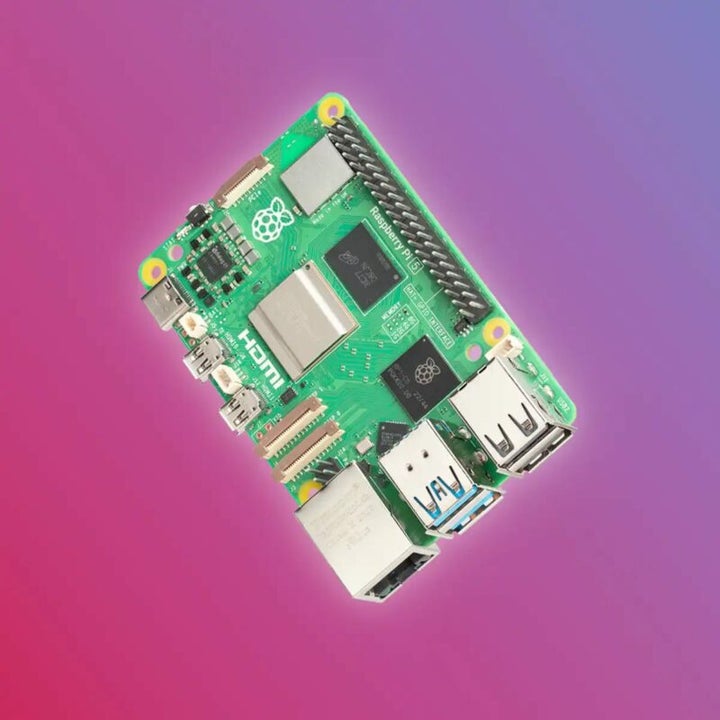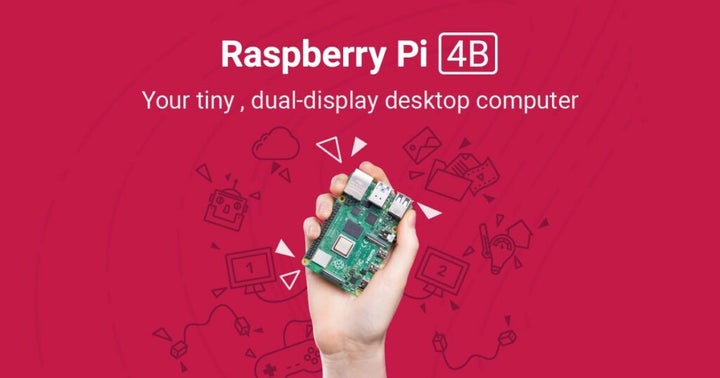News
What makes Raspberry Pi 5 special? Let’s compare it with Pi 4 and find out

- September 28, 2023
- Updated: July 2, 2025 at 1:07 AM

The wait is over, and the Raspberry Pi 5 has arrived with a bang! With a robust quad-core processor, enhanced memory options, and a host of new features, the Raspberry Pi 5 promises to take the single-board computing world by storm.
In this post, we’ll give you a rundown of this cutting-edge gadget by discussing its features, cost, and the differences between Pi 4 and Pi 5 in detail.
The arrival of Raspberry Pi 5
Competing head-to-head with other popular single-board computers like the Radxa Rock 5A and Cool Pi 4 Model B, the Raspberry Pi 5 is expected to deliver a significant performance boost over its predecessor. Moreover, it enjoys the support of a thriving community and improved software compatibility, making it an enticing choice for tech enthusiasts.
Raspberry Pi 5 specs: Power-packed performance
At the heart of the Raspberry Pi 5 lies its remarkable Broadcom BCM2712 System-on-Chip (SoC). This powerhouse features a quad-core Cortex-A76 CPU clocked at a blazing 2.4 GHz, a substantial improvement in processing power. Complementing this, the SoC also houses a VideoCore VII GPU, significantly enhancing graphical capabilities.
But that’s not all – the Raspberry Pi 5 comes with a slew of additional enhancements. It boasts four MIPI lanes (twice as many as the Pi 4) for microSD cards, supports High Dynamic Range (HDR), and includes a PCIe 2.0 x1 FPC connection for compatible add-ons. It also introduces a built-in Real-Time Clock (RTC), a dedicated UART connector, and a convenient power button. And yes, it still runs on the ever-popular Raspberry Pi OS.

Here’s a quick overview of the key specifications:
- Broadcom BCM2712 2.4GHz quad-core 64-bit Arm Cortex-A76 CPU
- VideoCore VII GPU with support for OpenGL ES 3.1 and Vulkan 1.2
- Dual 4Kp60 HDMI display output with HDR support
- LPDDR4X-4267 SDRAM (Available in 4GB and 8GB variants)
- Dual-band 802.11ac Wi-Fi and Bluetooth 5.0/Bluetooth Low Energy
- microSD card slot with support for high-speed SDR104 mode
- USB 3.0 and USB 2.0 ports
- Gigabit Ethernet with PoE+ support
- 4-lane MIPI camera/display transceivers
- PCIe 2.0 x1 interface for fast peripherals
- 5V/5A DC power via USB-C with Power Delivery support
- Raspberry Pi standard 40-pin header
- Real-time clock (RTC) powered by an external battery
- Power button for added convenience
- The Future of Raspberry Pi 5
While the Raspberry Pi Model B’s form factor has been its defining feature, some limitations are worth noting. It features shared MIPI CSI/DSI connections, a non-standard PCIe connector, and small HDMI ports. This has led to speculations about a possible Raspberry Pi 5 Model C, which might adopt a Pico-ITX form factor and include additional features such as 2.5GbE networking. Another avenue for exploration could involve the use of a future Raspberry Pi Compute Module 5 (CM5).
Raspberry Pi 5 vs Raspberry Pi 4: A needed comparison
The Raspberry Pi 5 has arrived, and it’s poised to revolutionize the world of single-board computing. How does it stack up against its predecessor, the Raspberry Pi 4? Let’s dive into the key differences and improvements.

| Raspberry Pi | Raspberry Pi 4 | |
|---|---|---|
| Processor | Broadcom BCM2712 quad-core Cortex-A76 CPU @ 2.4 GHz | Quad-core Cortex-A72 CPU @ 1.5 GHz |
| Memory Options | 4GB and 8GB LPDDR4X-4267 SDRAM | 2GB, 4GB, or 8GB LPDDR4-3200 SDRAM |
| Graphics Performance | VideoCore VII GPU, supports HDR | VideoCore VI GPU |
| Connectivity | Dual 4Kp60 HDMI with HDR support | Dual 4Kp60 HDMI |
| PCIe Interface | PCIe 2.0 x1 (Adapter required) | None |
| Additional Features | Built-in RTC, separate UART, power button, USB PD support | Standard design |
| Price | Starting from $60 | Starting from $35 |
In summary, the Raspberry Pi 5 represents a significant leap forward in processing power, graphics capabilities, and overall performance compared to the Raspberry Pi 4. With enhanced features and a competitive price point, it’s set to be the preferred choice for a wide range of computing projects, from DIY enthusiasts to professionals.
Pi5 pricing and availability
One of the standout aspects of the Raspberry Pi 5 is its affordability. The 4GB model comes in at just $60, while the 8GB variant is priced at $80. Sales are expected to begin by the end of October, and the Pi5 is set to remain in production until at least January 2035, guaranteeing an impressive 11 years of availability for this remarkable piece of tech.

For those eager to get their hands on the Raspberry Pi 5, pre-orders are now available through Raspberry Pi Approved Resellers.
In conclusion, the Raspberry Pi 5 represents a significant leap forward in the world of single-board computing. With its potent hardware, enhanced features, and attractive pricing, it’s poised to be a game-changer for hobbyists, tinkerers, and tech enthusiasts alike. So, mark your calendars and get ready to experience the power of the Raspberry Pi 5!
For more detailed information, click here.
Featured image credit: Raspberry
Meet Eray, a tech enthusiast passionate about AI, crypto, gaming, and more. Eray is always looking into new developments, exploring unique topics, and keeping up with the latest trends in the industry.
Latest from Eray Eliaçık
You may also like
 News
NewsChatGPT achieves a 76% increase in its performance
Read more
 News
News'Clair Obscur: Expedition 33' cost a complete fortune, but it's wildly successful
Read more
 News
NewsHelldivers 2 is getting ready to receive its biggest update to date
Read more
 News
NewsThe Game Awards crowned the game of the year last night amid huge controversies
Read more
 News
NewsThe most shocking news from The Games Awards 2025
Read more
 News
NewsThe series returns where you will see Idris Elba like you have never seen him before
Read more